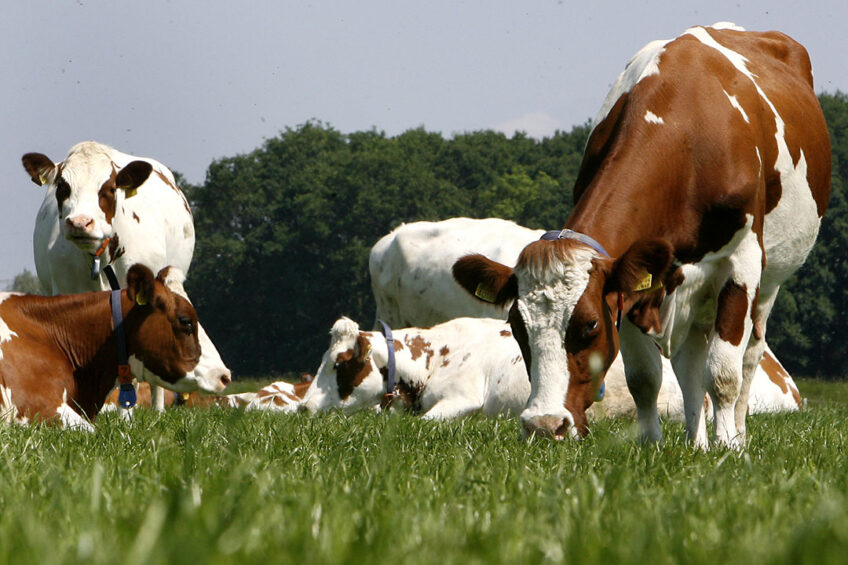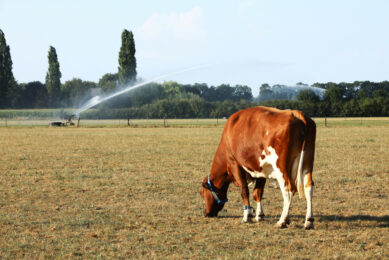Breeding for a better environment

Results of a new study by Wageningen Livestock Research, the Netherlands, show that breeding reduces environmental impacts of animal products by about 1% per year.
That percentage is achieved without specific selection on environmental traits, but as an indirect response to selection based on the current breeding goals. The Dutch university conducted the study on the contribution of breeding to the reduction of the environmental impact of pigs, but also of broilers, laying hens and dairy cattle. The outcomes were published in the report ‘The contribution of breeding to reducing environmental impact of animal production’.

Role of animal production in emissions
According to a news release on the website of Wageningen University & Research, animal production is responsible for 14.5% of total anthropogenic greenhouse gas emissions. About half of those emissions originate directly from animal production, whereas the other half comes from feed production. Animal breeding aims to improve animal production and the efficient use of resources, which results in a reduction in the environmental impact, the author explained. The objective of the study was therefore to quantify the contribution of animal breeding in the reduction of the environmental impact of the four major livestock species in the Netherlands (with their animal product), being pigs (meat), broilers (meat), laying hens (eggs) and dairy cattle (milk).
Breeding for increased efficiency
The news article, written by researcher Dr Ir Erwin Mollenhorst, WUR, explained how a literature review was performed to assess the current status of and historical trends in environmental impact, mainly focused on greenhouse gas emissions, based on general performance criteria. He wrote, “Emissions related to feed production dominate impacts of broilers, laying hens and, to a minor extent, pigs. For dairy cattle, enteric methane emission is a large contributor to the total greenhouse gas emissions. Historical trends show considerable improvements in efficiency over the last decades, in which breeding plays an important role. From the literature review we concluded that the contribution of breeding in the reduction of the environmental impact of animal production is led by an indirect response through selection on increased efficiency.”

Going for lower environmental impact
Next to the literature review, the researchers made a quantitative assessment of the current environmental impact of the four animal products and the effect of recent genetic improvements. For pig meat, broiler meat and chicken eggs they placed the focus on greenhouse gas emissions and nitrogen and phosphorus efficiency; for dairy the focus was laid on enteric methane emissions, an important contributor to greenhouse gas emissions. Data were partly provided by breeding organisations, partners in the Breed4Food consortium, which includes breeding companies Topigs Norsvin and Hendrix Genetics, as well as CRV and Cobb. In general, results showed that breeding reduces environmental impacts of animal products by about 1% per year.
Studies for pigs, poultry and dairy
For pigs, data were available from a well-controlled study with 2 diets and animals divided by sex; however, the time frame was only 2 years. Results showed that also for pigs in the growing-fattening phase, greenhouse gas emissions decrease and nitrogen and phosphorus efficiency increase with the current breeding goal. Furthermore, boars had lower environmental impact than gilts. For laying hens, white and brown hens were considered and it was concluded that white hens have a lower greenhouse gas impact and better nitrogen and phosphorus efficiency than brown hens and that improvements over the past 10 years went faster for white hens as well. For broilers it was shown that greenhouse gas emissions decreased and nitrogen and phosphorus efficiency increased with more than 1%. However, only data of a 4-year time-frame under less controlled circumstances were available, which resulted in a possible overestimation of genetic progress. For dairy cattle, results showed that with the current breeding goal, methane production per cow per day increases, but methane intensity (i.e. methane production per kg milk) decreases.
Also read: Efficiency key in lowering GHG emission
New traits need to be recorded
The researchers emphasised that all reported results were achieved without specific selection on environmental traits, but as an indirect response to the current breeding goals for each species, which is a combination of health, growth, and (feed) efficiency. “If it is desired to select directly on environmental traits, recording of new traits is required, e.g., nitrogen and phosphorus contents of meat and eggs and methane emission of individual dairy cows.”
The report was authored by Dr Ir Erwin Mollenhorst and Dr Ir Yvette de Haas, both attached to Wageningen Livestock Research.
Join 13,000+ subscribers
Subscribe to our newsletter to stay updated about all the need-to-know content in the dairy sector, two times a week.










